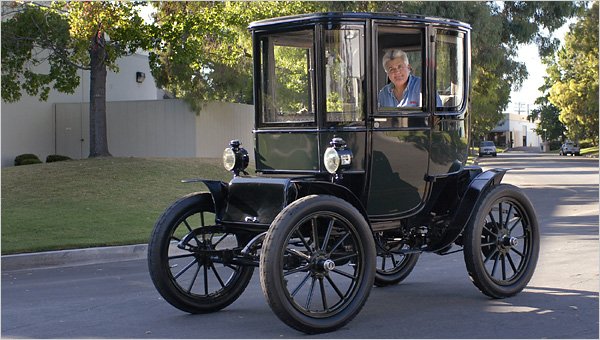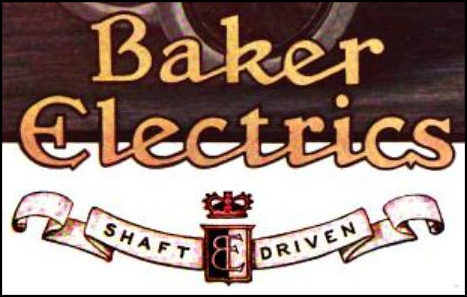1909 Baker Electric

The descriptions of the Classic Cars in the Directory were partly generated or supplemented with the help of artificial intelligence (AI). The content may occasionally not always be entirely accurate or factually correct despite careful checking.
The Baker Electric 1909 is an impressive and innovative example of early electric vehicle technology. This automobile boasts a number of technical features that were groundbreaking for its time, including a high-capacity battery system, advanced control systems, and an efficient electric motor.
One of the key features of the Baker Electric 1909 is its battery system. This vehicle is equipped with a set of lead-acid batteries that provide it with enough power to travel up to 100 miles on a single charge. This was a significant achievement at the time, as most other electric vehicles could only travel around 30 miles before needing to be charged.
The Baker Electric 1909 also features an advanced control system that allows the driver to regulate the speed and direction of the vehicle with precision. The steering mechanism is operated by a tiller that is located at the front of the car, while the acceleration and braking functions are controlled by a foot pedal. This control system provides the driver with a high degree of responsiveness and control, making the Baker Electric 1909 a pleasure to drive.
Another important technical feature of this vehicle is its electric motor. The Baker Electric 1909 is powered by a 3.5-horsepower motor that provides plenty of torque and acceleration. This motor is coupled with a single-speed transmission that allows the driver to achieve a top speed of around 20 miles per hour. While this may sound slow by modern standards, it was actually quite impressive for an electric vehicle in the early 20th century.
In addition to these technical features, the Baker Electric 1909 also boasts a number of other innovative design elements. The body of this vehicle is crafted from lightweight aluminum, which helps to reduce its overall weight and improve its handling. The suspension system is also well-engineered, with strong leaf springs that provide a smooth ride even over rough terrain.
Overall, the Baker Electric 1909 was an impressive achievement of early electric vehicle technology. Its high-capacity battery system, advanced control systems, and efficient electric motor made it a groundbreaking vehicle for its time, and its innovative design elements continue to inspire electric vehicle designers to this day. For those looking for a piece of automotive history, the Baker Electric 1909 is a true gem.
Milestones
- Incorporated as Baker Electric Motor Vehicle Company in 1908. - Began production of electric vehicles in 1909. - Introduced the Baker Electric Runabout and Baker Electric Victoria. - Opened a showroom on Broadway in New York City. - Offered a range of features including headlights, electric horn, speedometer, and automatic cut-out switch. - Partnered with the Yellow Cab Company to supply taxis in New York City. - Produced an estimated 2,500 electric vehicles between 1909 and 1916. - Introduced the Baker Rambler in 1915, the last model produced before the company ceased operations in 1916.Technical
- The Baker Electric 1909 was an automobile manufactured by the Baker Motor Vehicle Company in Cleveland, Ohio. - The car was powered by a 3 horsepower electric motor powered by a 12-cell battery. - The battery was located under the front seat of the car in a waterproof case. - The car had a range of about 50 miles on a single charge and had a top speed of around 20 mph. - The Baker Electric 1909 had a solid rubber tire design and sat on a 92-inch wheelbase. - The car's body was made of wood and was available in a variety of colors. - The car featured a tiller-style steering mechanism and a foot-operated brake. - The Baker Electric 1909 was marketed as a "quiet, smooth, and efficient" alternative to gasoline-powered cars.